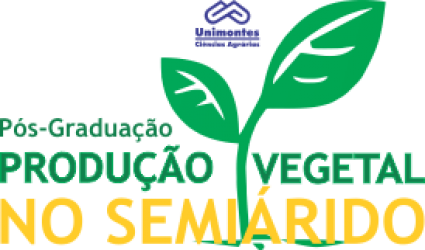- Version
- Download 3
- Tamanho do Arquivo 966.05 KB
- Data de Criação 11/06/2021
- Download
SILVEIRA, Thiago Correa. Combinações de fontes fosfatadas e calagem na produção de sorgo e no acúmulo de macronutrientes. 2015. 59 p. Dissertação (Mestrado em Produção Vegetal no Semiárido) – Universidade Estadual de Montes Claros, Janaúba, 2015.
A adubação fosfatada tem propiciado aumentos consideráveis na produção de sorgo, no entanto são escassos estudos relacionados ao uso de diferentes proporções de fontes de fósforo na produção de componentes e acúmulo de nutrientes. Neste sentido, objetivou-se avaliar distintas combinações de fontes de fosfato natural, fosfato reativo e calagem na produção e acúmulo de macronutrientes no sorgo sacarino. No primeiro cultivo, conduzido em vasos, utilizou-se o delineamento em blocos casualizados com quatro repetições, em esquema fatorial 2 x 6, sendo duas doses de calcário (com e sem calcário) e seis combinações de adubação fosfatada na dose de 90 kg ha-1 de P2O5: testemunha (0 kg ha-1 de P2O5); 100 % de fosfato natural Itafós (FN); 75% FN + 25% de superfosfato simples (SS); 50 % FN + 50 % SS; 25% FN + 75% SS e 100 % SS. O segundo cultivo, nos mesmos vasos e delineamento do primeiro, utilizou o efeito residual da adubação fosfatada. No primeiro cultivo, a interação entre calagem e fontes de P apontou maiores produções de matéria seca para os tratamentos com maiores proporções de superfosfato simples, na presença de calagem, visto que a maior quantidade de P solúvel dessa fonte associada a menor adsorção de P, em função da calagem, acarretou em ganho de massa. Os maiores acúmulos de macronutrientes foram nos tratamentos com maiores proporções de superfosfato simples, uma vez que esse nutriente estando mais disponível, ajuda nos processos metabólicos para absorção de demais nutrientes. No segundo cultivo, a interação entre calagem e fontes de P apontou maiores produções de matéria seca no tratamento com uso integral de fosfato natural, na presença de calagem, onde a disponibilidade de P estava em maior quantidade, dado às condições de solubilização. Essa tendência ocorreu também para o acúmulo de macronutrientes, que apresentaram maiores conteúdos nos tratamentos com maiores proporções de fosfato natural, em função da maior disponibilidade de fósforo e sendo esse um nutriente que favorece na absorção dos demais.
Palavras-chave: fosfato natural, superfosfato simples, sorgo sacarino
Combinations of phosphate sources and liming in sorghum yield and macronutrient accumulation
The phosphorus fertilization has provided considerable increases in the production of sorghum, however there are few studies related to the use of different sources of phosphorus ratios in the production of components and nutrient accumulation. In this sense, we aimed to evaluate different combinations of rock phosphate sources, reactive phosphate and lime production and the accumulation of nutrients in sweet sorghum. In the first crop, the study followed a randomized block design with four replications, and was conducted in polyethylene pots (8 L) in a factorial 2 x 6 involving two limestone rates (with and without lime) and six fertilizer combinations phosphate at a dose of 90 kg ha-1 de P2O5: control (0 kg ha-1 de P2O5); 100 % natural Itafós phosphate; 75% of phosphate rock Itafós + 25% single superphosphate; 50 % natural Itafós phosphate + 50 % single superphosphate; 25% of phosphate rock Itafós + 75% of superphosphate and 100 % of superphosphate. The second crop followed the same design of the first, but the treatments were conducted for the residual effect of phosphorus fertilization. In the first crop, the interaction between liming and P sources pointed higher dry matter production for treatments with higher proportions of superphosphate in the presence of lime, as the large amount of soluble P that source associated with lower adsorption P as a function of liming, resulted in mass. The highest accumulation of macronutrients were the treatments with higher proportions of single superphosphate, since this nutrient being more available, help in the metabolic processes for the absorption of other nutrients. In the second crop, the interaction between liming and P sources pointed higher dry matter production in treatment with full use of natural phosphate in the presence of liming, where the availability of P was in greater quantity since the solubilization conditions. This trend also occurred to the accumulation of nutrients, which showed higher content in the treatments with higher proportions of natural phosphate, due to higher phosphorus availability and making a nutrient that promotes the absorption of others.
Keywords: natural phosphate, superphosphate, sweet sorghum

